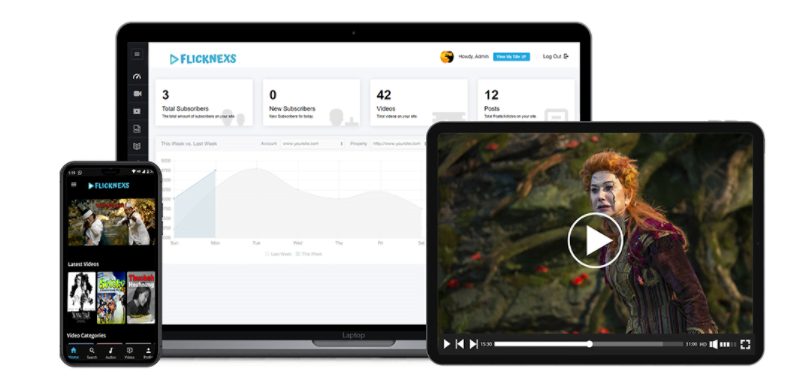
What is OTT Broadcasting?
Before we get started, let’s define OTT. Over-the-top, or OTT, is a distribution strategy that sends content outside traditional cable and satellite TV providers’ “closed” networks. OTT broadcasters, in essence, use the Internet to bypass traditional media gatekeepers.
Content can be streamed to any suitable device with a stable internet connection, eliminating the need for proprietary networks or infrastructure. This is in sharp contrast to traditional telecom vendors’ pricey equipment requirements.
With content distribution available on a wide range of devices and operating systems, OTT delivers a technology-agnostic experience.
OTT streaming can be done on almost any internet-connected device that can receive and show the signal supplied to it.
Traditional broadcasting is replaced by over-the-top platforms, which distribute information directly over the Internet without the hassles, frustrations, or expensive expenses that come with it.
“Now is the moment to get in on the OTT services market, which is anticipated to reach $158 billion by 2024.”
The process of sending content to users is known as streaming, just like traditional broadcasting.
Benefits of ott broadcasting:
Cable and satellite providers began delivering video on demand (VOD) content in the mid-1990s. On the other side, content options were typically limited and expensive. The explosive growth of the Internet and the emergence of over-the-top (OTT) media delivery have ushered in whole new media delivery paradigms.
OTT broadcasting excels at removing many of the constraints that come with traditional broadcasting.
As previously stated, most telecom providers bind their customers to utilize the vendor’s hardware and software. They’re also restricted to seeing programming on the provider’s set timetable. Broadcasters may bypass all of this thanks to the way OTT technology is set up.
The method of content delivery is simplified and improved with OTT broadcasting. Viewers can access the content regardless of location, time of day, or network provider as long as they have a compatible device and a stable internet connection.
The distinctions between over-the-top streaming platforms and traditional television will eventually dissolve as customers embrace them.
Types of OTT broadcasting:
1. Video-on-demand:
Video on demand, or VOD, is video material that viewers can watch whenever they want. Unlike traditional television, VOD streaming lets users watch content at any place and any time they want, rather than being constrained by the broadcaster’s schedule.
It’s worth noting that video on demand is only available for pre-recorded programming. There are no real-time performances or live streaming involved.
The fundamental advantage of video on demand is that it gives viewers more freedom and convenience. VOD is also less expensive to transmit because it requires less equipment and overhead. Even cellphones can be used to generate high-quality videos, which can subsequently be shared online.
2. Live streaming:
The act of broadcasting events in real-time is known as live streaming. It’s a one-of-a-kind way to create engaging experiences with consumers that on-demand video can’t match.
Real-time broadcasting encourages viewers to participate more since it allows them to be a part of the action as it occurs. They can also comment to hosts via chatbox.
According to research, the most significant part of live streaming is quality; thus, getting the appropriate setup is crucial.
Live streaming is more complex to set up since it necessitates specialized technology and software to produce high-quality online videos. You’ll need an OVP that can stream live video.
When compared to VOD, live stream data must be broadcast in smaller bits, resulting in more frequent transmissions and greater overhead to handle the process.
This is due to the difficulty of adequately reassembling large data blocks, which causes buffering and reduces the overall streaming experience.

Final thoughts:
OTT platforms are booming the Internet due to the emergence of the COVID-19 pandemic. Hope this article is beneficial for you to know about OTT broadcasting.
You are still confused, feel free to call us.

Leave a Reply